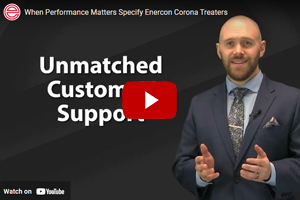Advancing Label Innovation Through Collaboration
- Published: April 16, 2025
By Amy Donato, PPG Global Strategic Marketing Director
Packaging is a physical representation of a brand’s identity, and label converters play an essential role in bringing the packaging experience to life. Once a concept has been developed, brand owners trust converters to create label solutions that deliver the necessary performance and aesthetic requirements to protect their brand reputation. Consumers are inundated with choices in-store and online, meaning that brands must try harder than ever to effectively communicate their core messages and connect with consumers. In today’s fluctuating market conditions, converters face mounting pressures from brand owners to produce labels that adapt to changing regulatory requirements, new smart technology, evolving packaging formats, and sustainability targets.
Converters and suppliers must adapt their strategies to remain competitive. Working together, these key industry players are developing innovative new approaches to label constructions, from thinner materials that support source reduction to connected packaging for an immersive brand experience and enhanced traceability. For demanding applications, converters and suppliers are coming together to engineer custom label solutions that combine printability, durability, security and adhesion. This requires the coordinated selection of compatible facestock, adhesives and liners. Suppliers that are committed to comprehensive research and testing support converters in their search to build the ideal label solution that meet their customers’ needs.
Increased collaboration between suppliers and converters enables informed product design and customization, helping suppliers design label materials that align with the technological capabilities of converters and the needs of brand owners.
Reliable Supply Chains
The top priority for suppliers is to ensure that converters have access to a reliable source of materials. The COVID-19 pandemic and subsequent material shortages exposed numerous supply chain vulnerabilities in the label industry, and converters remain wary of product delays that could interrupt operations and lengthen lead times. Suppliers are exploring various ways to build more resilient supply chains, including distributed manufacturing operations and new distributor programs.
Printing Compatibility
Streamlined inventory management can also be achieved with versatile label materials. As digital and hybrid printing presses gain market share, suppliers are focusing on developing substrates that are compatible with multiple types of printing processes. Converters can participate in the testing process for new materials that will allow them to offer flexible design options without the need to stock large amounts of varied substrate inventory.
Knowledge sharing throughout the value chain is particularly beneficial as printing and ink technologies evolve. New ink formulations, along with advancements in UV curing technology, can reduce energy consumption while maintaining performance on various facestocks, but may require other process adjustments.
Embellishing techniques such as foil stamping or embossing help CPGs stand out on the shelf, but require materials with specific heat tolerances. Suppliers can help converters stay ahead of market trends by adapting products to support customized solutions, from slitting rolls to fit press specifications to developing new products designed for innovative printing and finishing processes.
High-performance Labels
The wide variety of technologies available make the correct material selection even more complex for labels. Finding label constructions that have the right mix of high-performance characteristics requires a deep understanding of material attributes and the end use environment.
The rise of smart packaging has driven printability to the top of the list for label facestocks. Suppliers are focused on helping converters build label solutions that deliver exceptional print clarity for encrypted bar codes and scannable QR codes that support logistics management and brand marketing goals.
For segments including food packaging and premium products, durability is critical for tamper evident labels and brand protection. For applications with high safety and security needs, converters are working with suppliers to explore substrates that offer tear resistance, abrasion resistance and permanent distortion, such as synthetic papers and laminated substrates.
Harsh processing or environmental conditions also have significant implications for label performance. In medical and pharmaceutical applications, labels are often subjected to sterilization processes, freezing temperatures and other extreme exposures. From blood bags to sample tubes, medical labels must deliver strong adhesion and conformability to withstand transportation and handling procedures on these flexible and rounded surfaces.
Chemical drum and container labels that communicate important product and safety information must also remain intact and legible through saltwater immersion, chemical exposure and shipping operations. Suppliers are helping converters find the ideal combination of adhesive and facestock for label constructions that meet the BS 5609 standard, one of the industry’s most stringent specifications for label durability.
Sustainability Measures
Underlying every performance and aesthetic concern, increasing the sustainability of packaging has become an important goal for brand owners and manufacturers. Many organizations have committed to 2030 sustainability goals informed by programs such as the Science Based Targets initiative (SBTi) and the UN Sustainability Development Goals (SDGs).
Brand owners look to converters to help them realize downstream emissions reductions, urging converters to reduce waste and energy consumption to lower the environmental impact of their facilities. Digital printing has enabled the expansion of just-in-time manufacturing principles, making smaller print runs cost effective and preventing wasted labels, while AI and automated processes are helping improve overall equipment efficiency (OEE).
Suppliers are developing materials that enable source reductions, such as substrates that offer equivalent printing performance at lower thicknesses. Downgauging and lightweighting can also contribute to lower transportation costs and emissions. Through collaboration in the research and development process and the optimization of equipment performance, material suppliers can significantly assist converters in enhancing their sustainability initiatives.
As the packaging industry continues to evolve, label converters and suppliers must work together to meet brand owner demands. From ensuring supply chain reliability to advancing printing compatibility and high-performance label solutions, collaboration within the label industry is key to innovation. By embracing new technologies and fostering strong partnerships, converters and suppliers can develop label solutions that not only enhance brand identity but also drive efficiency, adaptability, and environmental responsibility in a dynamic market.
About the Author
Amy Donato is PPG's global platform director for TESLIN® substrate — a synthetic facestock for printed labels. She has nearly two decades of experience in marketing and sales for consumer and B2B industries. She earned a B.S.B.A in marketing from the University of Pittsburgh and an M.B.A. from West Virginia University.





